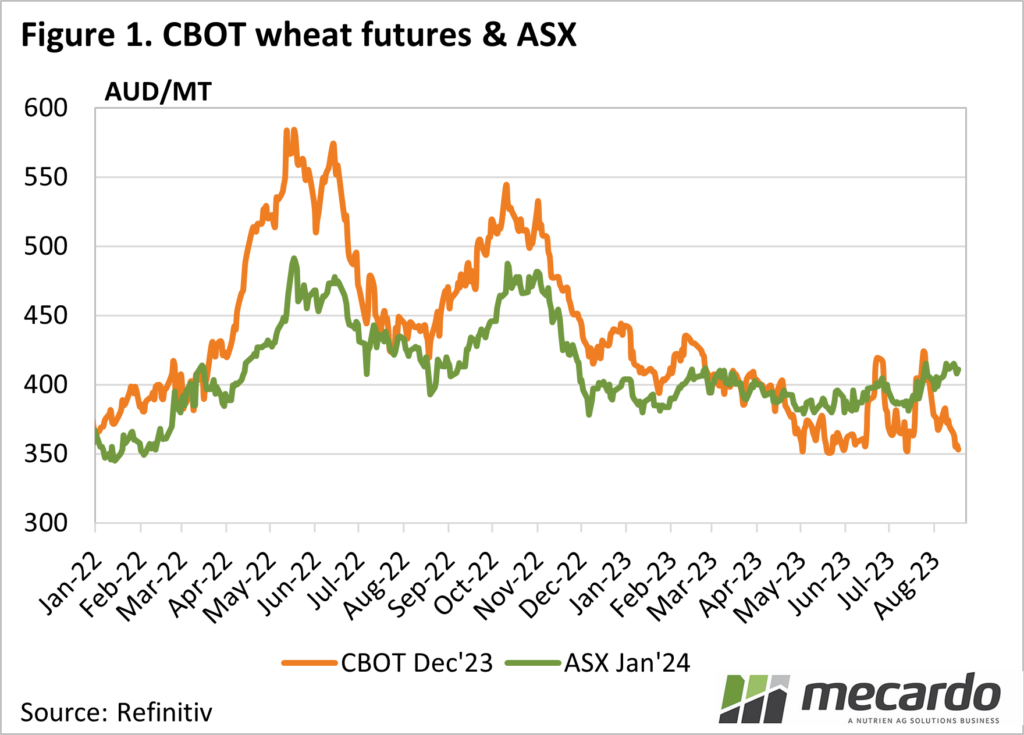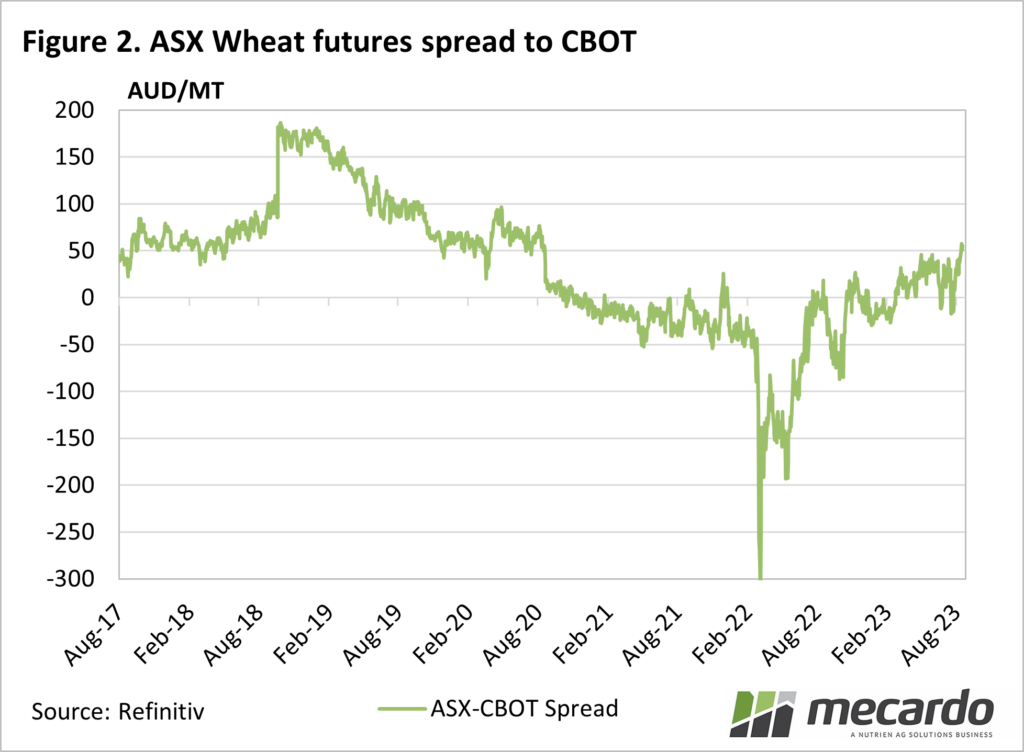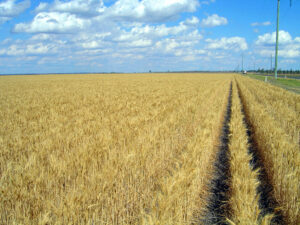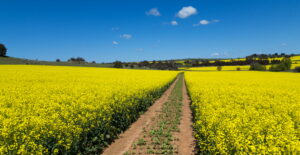While the wheat roller coaster has continued to go through ups and downs in Chicago, locally pricing has been much more stable. In fact, we have recently seen local wheat move higher despite falling international values, with basis now higher than we’d expect in a ‘normal’ season.
Chicago Soft Red Wheat (SRW) Futures bounced off lows late last week, but they have still lost close to $70/t over the last month. The support level of 600¢ has held again, in the face of harvest pressure in the northern hemisphere. This suggests the market might have found its low, with plenty of uncertainty still plaguing international trade.
Locally there has been much less volatility. Figure 1 shows ASX Wheat Futures having a much smaller range and holding strong in the face of the most recent decline in the US. Dry weather and a negative rainfall forecast are no doubt supporting local prices.
Figure 2 shows the ASX Wheat ‘basis’ or spread to SRW. The recent fall in SRW, while ASX has held at $400/t has local basis at better than $50/t for the first time since August 2020. While basis is still well off the drought levels of 2018-19, it is moving into the ‘expensive’ realms for international trade.
Part of the reason ASX is remaining strong is the fact it is a milling wheat contract, while SRW is essentially feed wheat. Hard Red Wheat Futures, traded in Kansas City, are currently sitting at 755¢/bu, or $420/t.
Last week Mecardo reported rain might be downgrading wheat in Europe and Russia, which will see more feed on world markets and less milling wheat. This will no doubt help support our milling wheat values.
Locally we are yet to see new crop milling /feed spreads move. At Geelong, the APW premium over SFW1 has been pegged at $50 per tonne for new crop since mid-July. It has moved a little for old crop, moving from $20 to $30/t a fortnight ago.
What does it mean?
Strong basis is a sell signal normally, but we are entering that time of year when selling physical becomes increasingly risky. A price of $400/t is attractive, but we know drought can easily push this through $450 if supply prospects wane further.
Those looking to manage feed prices could do worse than try and lock in some supply if any willing sellers can be found.
Have any questions or comments?
Key Points
- Local wheat pricing is much less volatile than global prices.
- Basis is moving toward local pricing being ‘expensive’ for international trade.
- European and Russian downgrades will support milling wheat values locally.
Click on figure to expand
Click on figure to expand
Data sources: CME, ASX, Refinitiv, Mecardo














